Home » Articles posted by Ben Ridgway
Author Archives: Ben Ridgway
Google Earth Tours
In my mind nothing is more intriguing that the digital world that’s been captured by cameras and put on display. With our fingers and an electronic device we can travel the world in minutes, seeing new areas waiting to be explored. This isn’t a new discussion though, as we previously analyzed Air Pano and their tour of Cape Town, South Africa. Of course in this digital age there are countless formats to view and explore our world, but one format is rising to the top. Digit superpower Google has it’s Google Earth application, of course, but what might not be known is it’s virtual reality (VR) system called Google Cardboard. Google Cardboard is an inexpensive device designed to hold your cell phone and be able to experience virtual reality. Google jumped into the VR market with a strong stance with their Google Earth and Google Maps already accessing street views.

After the development of Google Cardboard, Google started adding VR options to their applications, fittingly calling them Earth VR and YouTube VR.

Earth VR brings the aspect of “street view” a whole new meaning. Pictured above is a view of the New York City skyline via Earth VR. With Google Cardboard you can purchase two remote-like devices that act as controllers within VR. Also within the picture above we can see how the controllers are used to navigate the world; the right controller being the pointer and selector tool and the left being a selection hub for the world.
The use of Earth VR can go beyond just entertainment and fun, but could be effectively integrated into classrooms. Anywhere from discovery activities for History classes or English classes to VR Minecraft: Education edition to add for a more interactive, real-life class experience.
The other Google-backed VR tool is YouTube VR. YouTube VR is a channel on YouTube, aptly named Virtual Reality, that posts “360 videos”, videos best watched through virtual reality. Some are also formatted especially for VR by altering the video structure so that the viewing is the same for both eyes, creating the realistic experience.
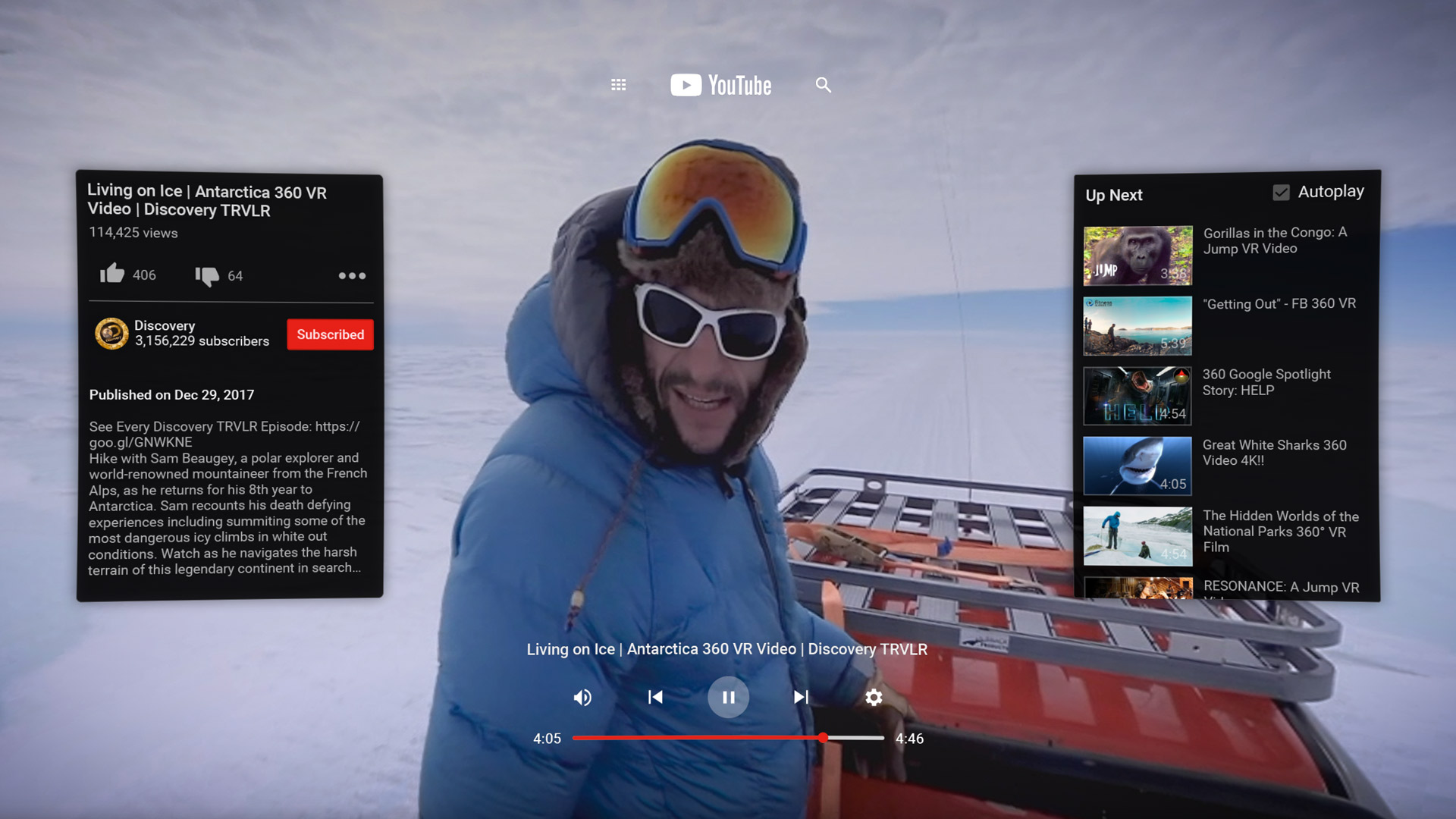
Here you can find different games and applications to use with Google Cardboard.
Out of Eden: The Original Walk
Humanity is old. Like, really old. Our ancestors have been around for over two hundred thousand years, and truthfully that’s just a small sliver of time compared to Earth’s lifespan. Nevertheless, our creed now spans the globe and reigns over all other species. Of course, that wasn’t always the case. Humanity never fought for it’s top spot in the race for species kingship, but back during the first generation of homo sapiens the Earth was unexplored. National Geographic, in collaboration with Paul Salopek, explored the journey out of Africa, the origin of our people, and into the vast world that took centuries to trek. The trek they took can be explored in minutes with the technology we have today.
I explored three parts of Paul’s current eight year journey. You read that right, current. Paul started his journey in 2013, and through eight years of continuous venturing he’s gone 7500 of the estimated 12,000 miles our ancestors originally walked. I joined Paul in the beginning, and what really struck me was Paul’s outlook on the journey. The man had accepted this journey would be over ten years of his life, but his mind worked in a way that so that explaining the importance of his journey was understandable. Paul started in Africa, of course, more specifically Ethiopia. From the article “Let’s Walk“, we gather Paul’s initial thoughts. His journey will reflect the past, not focusing on his end point of Tierra del Fuego. He restates that to locals who ask him where he’s going. Paul’s focus is always on the next point, not the end. This adds to the accuracy of the journey as our ancestors had no true end point, they search for habitable land. They searched for conditions to live in, for flourishing land and game to hunt.
Of course this journey is nearly impossible now without boat. Continental separation and climate change over nearly two hundred thousand years made this journey sectioned off by bodies of water. The caption of this section was “Silk Road”. The formidable Silk Road was a trade route encapsulated in history as one of the most important marks of development. Paul’s “Silk Road” is no longer accurate to the Silk Road of the past, but Paul’s journey shows the modernize Silk Road. Today we have much quicker means of transporting goods, whether that be by boat, plane, or more local means like car or mail carrier systems. These our the Silk Roads of today.
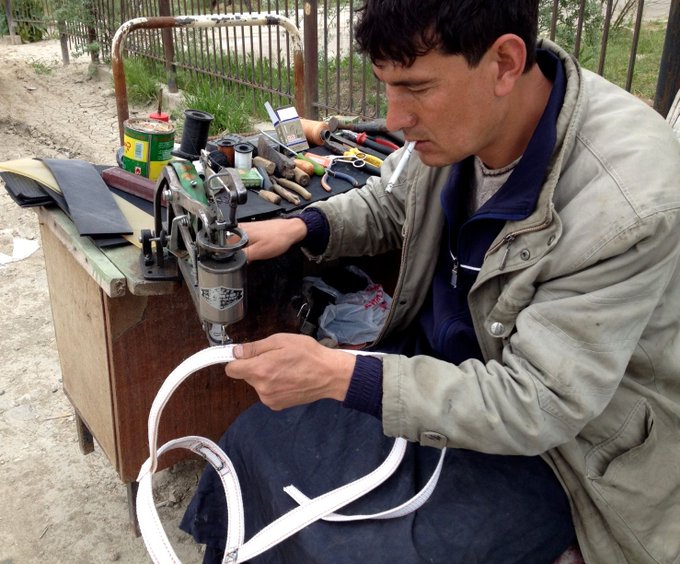
https://twitter.com/PaulSalopek
Paul is nearing Eastern Asia now. The Out of Eden website is updated on his journey as of October 2021. What I have come to love about Paul’s journey is his perspective. Through seven, almost eight years of travel he has not changed his outlook and ability to describe. He has become grounded and more aware. Meeting people from along his journey has shown him different perspectives of the modern world. In his journey is reciprocate the ancestral world he has found nothing but damage. The word’s of the wise seem to go unheard. The article “Green Ark“, also the most recent from Paul, shows how passionate Paul has become along his journey. He began his journey focusing on the next destination, exploring a foot-worn route as old as time. He now sees deeper than we can imagine. He has seen development and unnatural development. In his latest article, he states that along his path in Asia “I spot a dark form flit from the ground into the trees… it is Gallus gallus, the red junglefowl, a wild Asian ancestor of what is by far the most abundant bird on Earth today: the 65 billion commercially bred chickens eaten by humans every year” (Salopek). 65 billion. If that doesn’t show the impact of commercialism and greed then I don’t know what does. If that doesn’t rattle you, then try to fathom the carbon output and pollution effect that product has.
Paul isn’t done his journey yet. You can keep up with him here: https://www.nationalgeographic.org/projects/out-of-eden-walk/
WE Teachers and Mental Heath
This world is in the hands of the generations to come. We have growing issues that must be identified and addressed properly, and that comes with educating and advancing the next generations. Our generation must do the planning, research, and educating to enable the next generation to make big changes.
Sadly, I’ve been hearing this statement since the time I was in elementary school. So what generation is the one to actually be the educators, and which will be the changemakers?
It seems like ours. WE.org is an organization with this plan set in mind. WE is empowering students of all age to make changes and put their best hand forward in attempt to help in any way. Charity events, nonprofits, community outreaches, so on and so on, the goal is to create a generation of students who mind the well-being of others. To mind the well-being of others, they must first mind their own.
The teachers of WE are taught, through a free program, how do address mental health lapses or disorders in their students.


Being able to address these mental conditions is teaching for the future. This impacts the students ability to learn and socially interact in school now, but impacts their mental health for the future. Not every single student will be perfect, and preparing teachers for all different types of situations will increase their class awareness and broaden their ability to teach, reaching and impacting a larger audience during their time. Moreover, if this module from WE.org is made mandatory in teacher education programs, inclusivity and mental health will be no issue for future generations to combat.
Hyperdocs
Classrooms are ever adapting to the evolution of technology, and what’s coming along with it is new forms of teaching. The development of user interface and now seemingly universal access to computers has resulted in making education easier on students. Teachers are now taking advantage of this student-desired format. Online lessons, video lectures, and studying applications are now being incorporated into every day classrooms and replacing the typical, often boring assignments or lesson structure. Coming from a student, the pen and paper notes format just never caught my full attention. These online forms of learning are referred to as Hyperdocs. Hyperdocs are not just helping students engage in the classroom, but they are improving scores in students who struggle to focus in school.
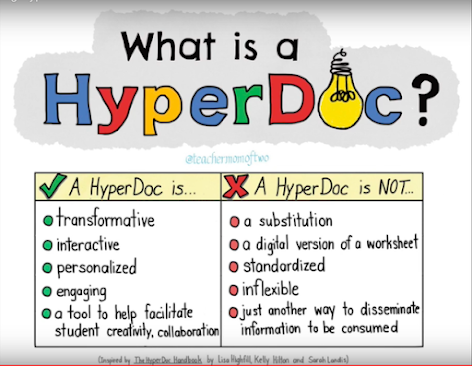
Above is a perfect outline of what a Hyperdoc represent and cover. Hyperdocs should not be a substitution of work, nor should it be a dulled down version of it. A hyperdoc should coincide with the lesson plan and materials the class is based around. For example, a hyperdoc could be used in a history course to show key points and prompt critical thinking questions, via a PowerPoint or Google Slide.
Here’s a perfect example of a student made Hyperdoc showing the students knowledge and full comprehension of the subject: Civil War hyperdoc
Within the hyperdoc is a layout of the contents, the information given in order, and links, in this case, embedded on every slide. The links take you to either source material or explanation documents detailing the slide better. Hyperdocs are more than just presentations displaying information. They are tools for learning that help students process and connection information. A great comparison is hyperdocs to maps. Both lay out all the information necessary to succeed, it is just up to the user to interact with them accordingly.


Provided above are two slides of the example hyperdoc. The first is a great example of a title slide. The slide has all the following slides provided and linked, like a table of contents. The second slide is a body slide providing information on it’s specific section of the topic. This slides assignment links have been removed for privacy concerns, but the image link still works and takes you to a virtual scavenger hunt. Many of the other slides follow a similar format.
Hyperdocs are another educational form that will revolutionize the classroom as education begins to become more comprehensible and assessible for all, regardless if the students don’t have technological access or have trouble understanding lessons and materials during their time in the classroom. The educational future is bright, and creative applications of learning like hyperdocs will be seen in every class plan at almost every level.
Air Pano’s Tour of Cape Town

Our world is filled with so many different wonders, and there’s nothing quite like visiting a new place. Virtual field trips are the closest thing we can get to actual trips, and for those who might not have the time or resources for actual trips, this is a wonderful assimilating experience. These virtual field trips provide you quite literally with an overview of a location of your choosing. I toured the southern-most country of Africa, South Africa. More specifically I saw the coastal gem of South Africa, Cape Town. Cape Town is located as south as you can get in South Africa and is known globally for it’s surf and surf culture. What most don’t know, or see, was shown by Air Pano’s virtual tour.
Air Pano showed Cape Town in a brand new light. The famous sunsets and beaches are the highlighted experiences at first, of course, because that’s what expected of Cape Town. Table Mountain and Lion’s Head, two geographic formations Cape Town is known for and built between, became much larger in the visuals provided. The town seemed to be built in a valley the way the mountains rose above.

I can’t explain the beauty better than a picture can. Usually cities don’t get credited as beautiful places, but the geography surrounding the city creates an encapsulation highlighting the beauty within the city walls. The city park, the memorials and statues, and even the homes of Cape Town. The impoverished sections within the city don’t pose much promise, but from the sky the housings’ colors pop out like murals on a barren wall. The painted tile roofs vary from red to blue, and very color in between.
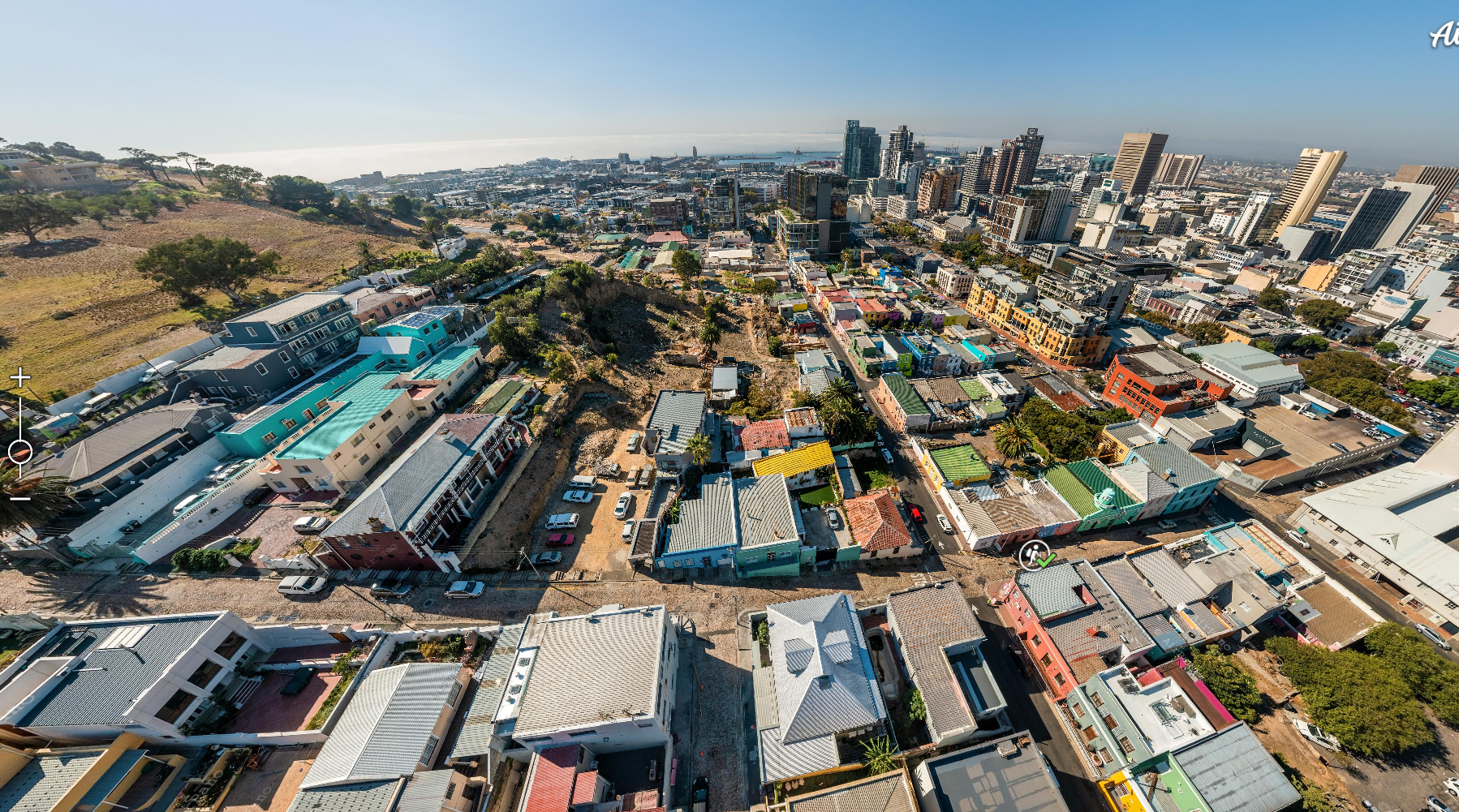
I was truly stunned by this virtual tour from Air Pano. After I viewed Cape Town’s virtual tour I viewed Cascais, Portugal and a Russian island that I had need heard of. Beauty spans every inch of this world, it’s all about how it’s displayed.
Bollywood Cinema
Bollywood cinema often gets the reputation of ‘Hollywood knockoff’ or ‘low budget Hollywood’, but I beg to differ. One of my courses this semester is called “Bollywood Cinema: Past and Present” and when I saw the topic of this week’s blog post, I felt advantaged. I’ve watched and analyzed countless Bollywood movies because of this class. The film I choose to analyze is Dilwale Dulhania Le Jayenge. Produced by Yash Chopra and written by his son Aditya, DDLJ (as it’s shortened as) was released in 1995. This musical romance is a perfect example of a well-produced Bollywood film.

DDLJ takes place in London, and the two protagonists (pictured above) are graduating high school. Both have the idea to travel Europe before returning and moving on to their respective futures. The two coincidentally meet on their trip, and through multiple setbacks, are forced to spend the entire trip together. Raj, the typical player type, tries to get Simran to fall in love with him. Simran is initially annoyed with him, but realizes that he changed just for her, and had taken care of her throughout the trip. When Simran offers to take Raj to India, he rejects, as he felt his efforts weren’t enough. After being separated for a few days, they both realize their love for each other. This late ditch effort comes to late though, as Simran’s father prepares to send her to India for an arranged marriage. Raj somehow finds Simran in India, fights Simran’s father for her hand in marriage, but is not successful.

Bollywood movies typically show cultural aspects like musical skits and scenes. DDLJ is no different, adding almost thirty minutes of musical scenes. These scenes always indicate turning points in the film. For example, a musical scene happens when Raj and Simran first meet, as well as when they first realize they are both in love.
The first analysis I made was the similarities DDLJ has to Shakespeare’s Romeo and Juliet. Both show forbidden love stories, just have different cultural perspectives and references.
The wardrobe department for DDLJ didn’t fit the European setting, but rather showed traditional Indian garments, besides Raj’s character. Raj’s character went for a more sportier look, donning a leather jumper and jeans. His father also wore similar attire, but Simran’s father always appeared in tradition India garments. So did Simran’s mother and herself. The clothing of the different families showed their cultural and religious views without even stating them.
I really suggest watching DDLJ if you are looking to begin watching Bollywood films. It’s a great film to show you that the movie industries aren’t different at all. The ‘one-off’ reputation Bollywood gets is really a fallacy and these often under-budgeted films can be well produced and inviting.
(I did watch it for free on NJVID because I am taking a Bollywood Cinema course, but renting it is definitely worth it)
The Importance of Communication and Presenter Coach
Communication is key.
How many times have you heard that in your life? Moreover, how many different situations has it been applicable for? We communicate, and lack to communicate, with one another everyday. It’s virtually impossible to go an entire day without communicating with someone in one form or another. In today’s world, there are plenty of ways to communicate with the people you associate with. The ability to communicate starts to develop at a very young age, but around the elementary and secondary school years, communication skills are necessary and they begin to advance. Social interactions and classroom activities fuel this development process but still communication is difficult.
Teachers try to infuse activities and practices into their curriculum to better develop their class’s communication skills. I’m sure the first thing that comes to your mind when thinking of communication in the classroom is group work. Group work is great for developing communication skills and friendships with peers that make the true test of communication, presentation, a bit easier. Presentation of information, just like communication, can come in many forms. Presentation can be to one singular peer, to a small group, a whole class, or just the teacher even. To simplify, presentation is hard. Everyone can agree on that.
But it doesn’t have to be.
That’s where Microsoft’s Presenter Coach comes in. Presenter Coach is an extremely user-friendly tool to use, and is an extension that goes over the details of your presentation. It tracks the time of your presentation, how many slides you have presented, and the pacing of your presentation as well. What I really love about Presenter Coach is the in-time feedback it gives as you present, so that if you get lost or want to tweak your presentation at a certain point you can receiver live feedback of that section.
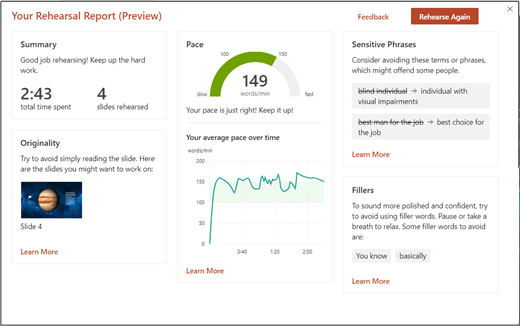
Presenter Coach is a modernized peer review. It adds elements like Sensitive Phrases so you can accommodate to your audience and promote social awareness, and Originality to help personalize your presentation.
This is a tool I’m going to be using in the future. Discovering this tool half way through my sophomore year is six years too late. Mandating this in the classroom will improve students’ work, presentations, and presentation skills. The impact Presenter Coach will have in developing communication skills will transcend the classroom.
Our Future: The Importance of SDGs
Our Earth isn’t a perfect place. There’s poverty, hunger, inequality, and on and on. It seems like every day we hear new news of more global issues that seem to be stacking higher and higher. Our Earth doesn’t have a singular government to act on these issues, but the United Nations is the closest solution. The United Nations is a committee with representation from every single country in the world. The UN has developed and crafted different plans of action to tackle these crises across the globe. Sustainable Development Goals (SDGs) are the way to achieving the global peace and prosperity that the UN is striving for. There importance is much larger than helping impoverished countries gain traction or establishing global peace and equality, rather they will help improve global climate conditions and future POAs. The future isn’t guaranteed for our Earth, and we may be shortening the life span of our generation and generations to come if we don’t start achieving these goals.

These are the Sustainable Development Goals. These aren’t new to me as I’ve had previous interaction working with them in classes before this, but to many it’s their first time seeing these. That’s a problem in my eyes. These goals are our future. These goals are for the betterment of our lives.
Of the seventeen SDGs, I would highlight three of them: no poverty, zero hunger, quality education. It’s so difficult to think and decide on which to prioritize because of the importance and connection between all of them. Educating our youth is definitely a priority. Educating them on these issues especially, because without teaching the next generation then these goals will never be met.
No Poverty and Zero Hunger interconnect with Good Health and Well-Being, thus why I prioritize them. Poverty ravages every country, everywhere. We can drive fifteen minutes away and see impoverished living conditions.
I really struggled thinking which issues need to be tackled first. And my final answer is: none. No one SDG needs to be prioritized over all the others. They all are critical and need to be addressed. As I’m going through them, we are not close to achieving any of them. The United Nations suggests that we complete this list of SDGs by 2030. It’s 2021, and I don’t believe we are close. Saving our world needs to be prioritized.
The CBYX: America and Germany’s Educational Experience
Traveling and venturing to other parts of our vast world is a delicacy in some people’s minds. Learning new languages, experiencing new cultures, the feeling of new and the curiosity of adventure often gets our population up and moving. For someone who hasn’t left the United States, the thought of travel fills me with imagination and excitement. My desire was never higher than during my freshman year of high school. Some students of the U.S. are out living my dream. Those lucky few are all over the world, but one program sticks out when it comes to educational exchange. America and Germany’s collaborated exchange student program called Congress-Bundestag Youth Exchange (CBYX) has been bringing American students and German students back and forth between the countries since 1983. Since then, 26,000 students have venture to the opposing country for a school year’s time.


So what makes this program better than the education the children would receive if they stayed in their regular program?
Really? Is that really a question I have to persuade you with?
The children who apply for this program are given cultural and language lessons prior to their travel to Germany or the United States. They are informed of rules and regulations that are essential or that may be different. Culture shock is typical, but after the program they are typically acclimated. The children get a month or so of language training so they aren’t language blocked. Upon arrival, they are placed in a volunteer foster home. The foster home is responsible for housing and feeding the child. The children are given health and medical benefits for during their trip as well.
The program is for the highly motivated students that have a desire to learn a new language and experience a new culture. They want to see a whole new world, essentially, where nothing is the same. They are placed out of their comfort zone far from home, but the gain new experiences that their peers back home won’t gain.
I had a CBYX exchange student in my school my senior year. To accredit this program, he absolutely loved his stay and told us how much different it was compared to home. A small detail that was different was how we dressed, he said. He wore track suits and Adidas shoes with no socks every day. He had different approaches to conversations, and shook every male teachers hand when he walked into class. But there was plenty of aspects that were the same he said as well. Sports were the same, though we had a much larger school. He was shocked by the size of our school and how many students could be packed into the halls between classes.
I wish I could have been part of this program in high school, and I still debate studying abroad. Seeing the world and developing a better understanding of other cultures is something I’d like to accomplish with age.
Tonight’s Assignment: Video Games?
There’s probably no other words students would rather hear than “play video games for homework tonight”. Quite honestly, I don’t think that’s been said before these recent years. While looking for interesting topics and uses of collaboration, nothing stuck out to me like the use of Minecraft in the classroom. It had been mentioned previously to me, but the idea of my childhood’s favorite past time being used in the classroom struck me with jealousy. Educators are integrating Minecraft: Education Edition into their lesson plans.
So what’s the difference between this and regular Minecraft? What’s stopping students from disengaging and wasting time just playing games? Minecraft: Education Edition has barriers (literally and figuratively) put in place to limit the gaming aspect without stripping the creativity of it. This video explained the additions to the game that can regulate some game mechanics while making the game more classroom acceptable. These additions to the game aren’t the primary functions of teaching via Minecraft, although they are helpful. Teachers create lesson plans using the STEM aspects of Minecraft and engagement factor of multitasking, design, and challenge.

If you have logged any hours in Minecraft, which seems likely being that Minecraft has up to 130 million monthly users, you’d know how the collaboration aspect comes into play. The most popular video game ever taught me and my friends how to establish order, divide tasks, and share resources before the age of 13. Replicate that in the classroom and the students begin to succeed. The students will divide tasks given and share information and resources to complete the given tasks. For example, a history teacher could create a lesson plan integrating communication and leadership aspects by asking their students to build a historical moment but with only limited resources. This challenges the students to talk amongst themselves and create a plan of action. The possibilities are endless, just as the building limits in Minecraft are limitless.
I love the idea of incorporating Minecraft into the classroom for more than the childhood memories I have attached to it. Minecraft opens a new door to communication and collaboration between students, whether that be during school hours or after hours at home. Minecraft could become a more engaging medium between students to help each other do assignments, study, or share information. The representation of lessons can reach out to the students’ creative minds and help them develop visual connections with the information they are given. Minecraft enables the ability for students to collaborate with students beyond their classes, even beyond their school district. This format of learning is great for the students now, but I believe this format will open more doors to ‘video game based learning’, a format more relatable to students.
https://www.edsurge.com/research/guides/game-based-learning-preparing-students-for-the-future
Recent Comments